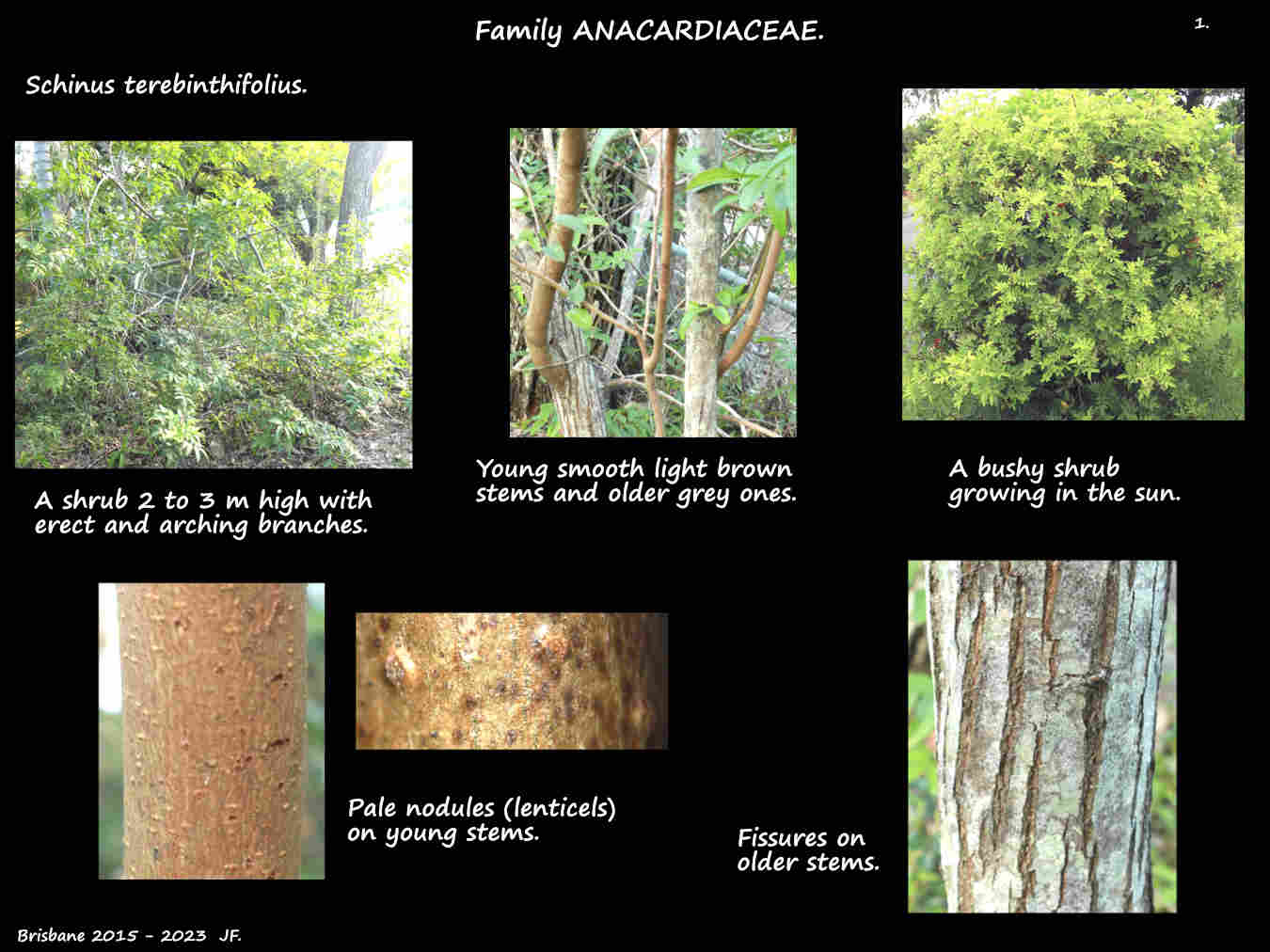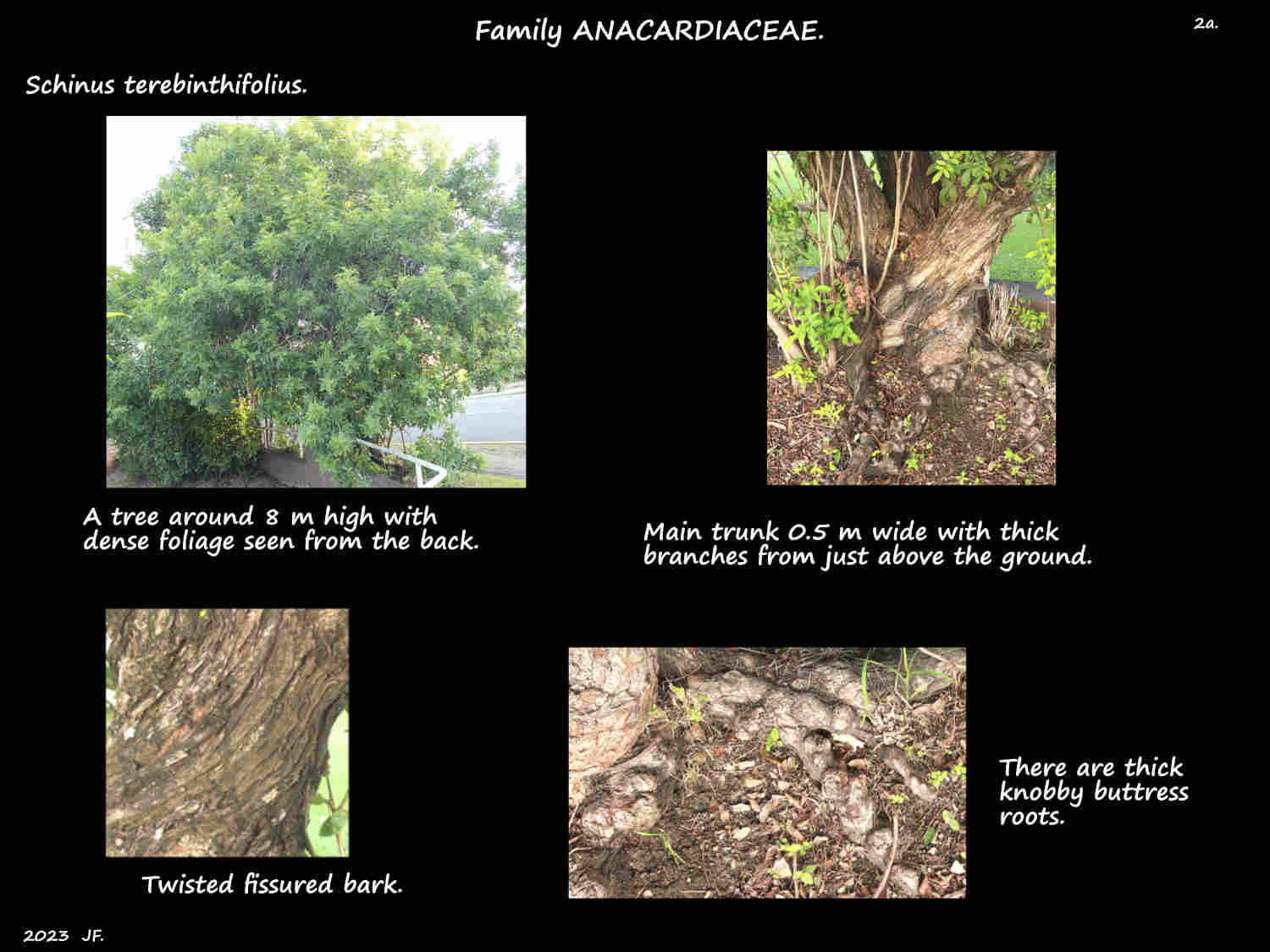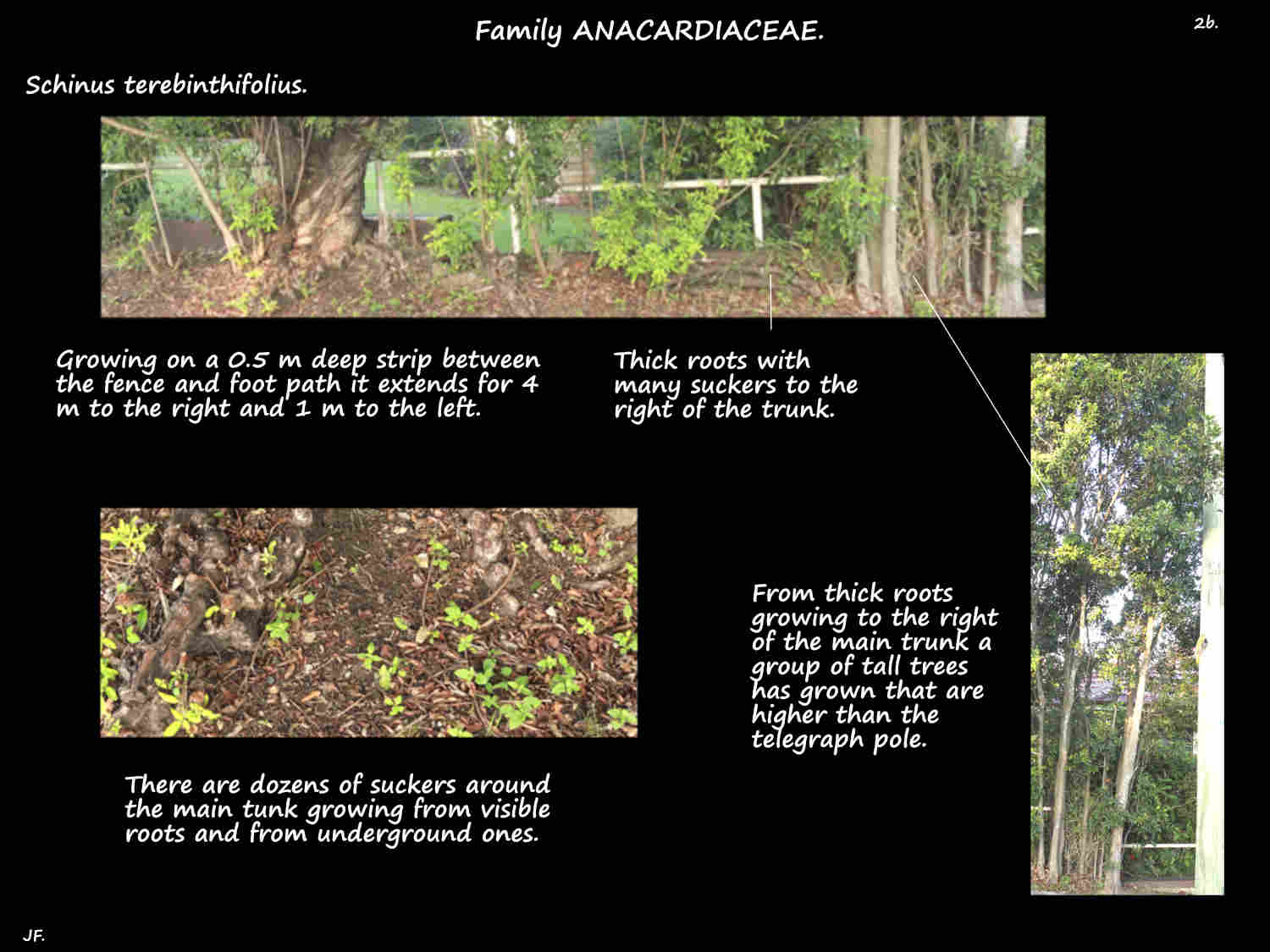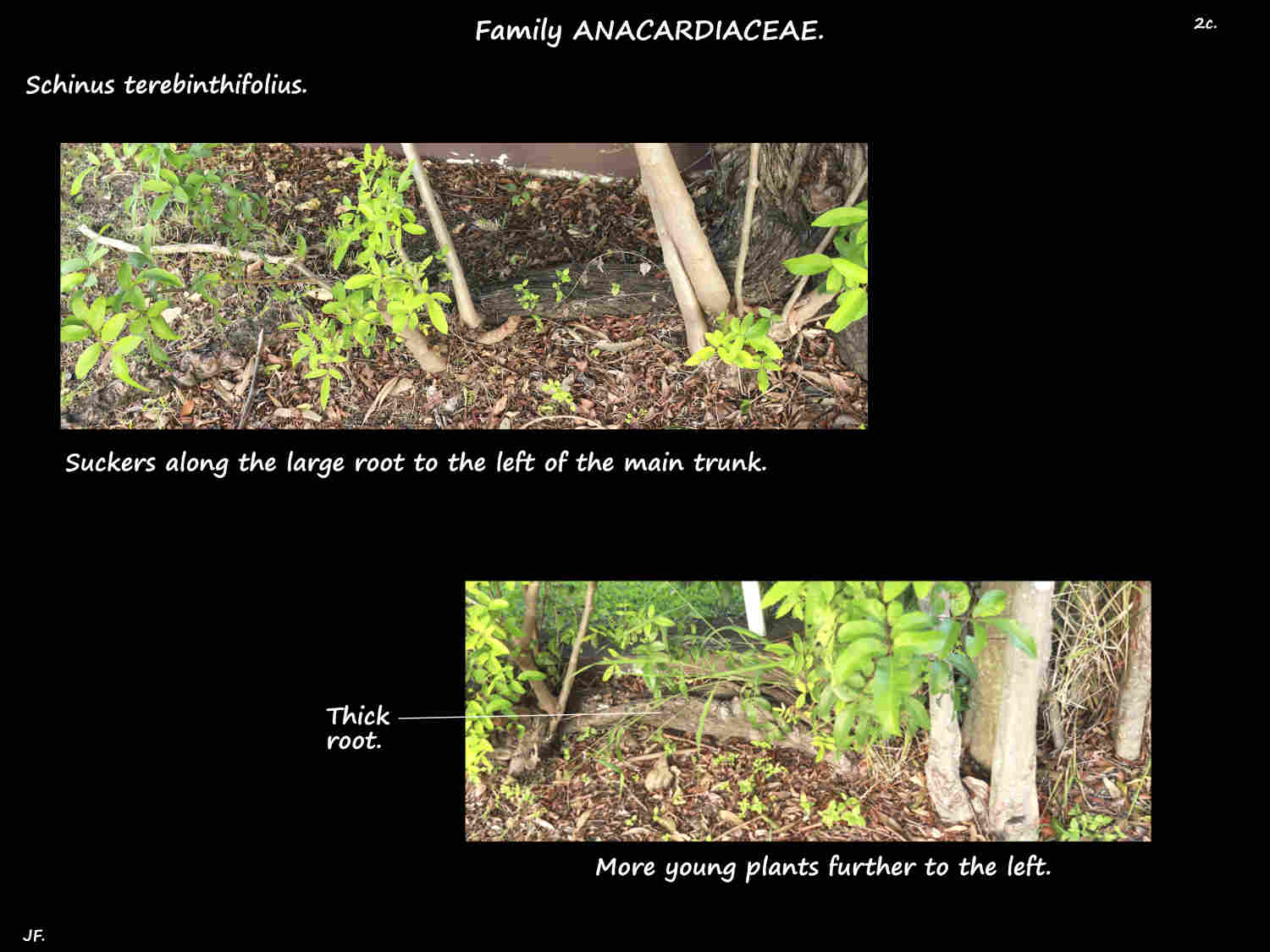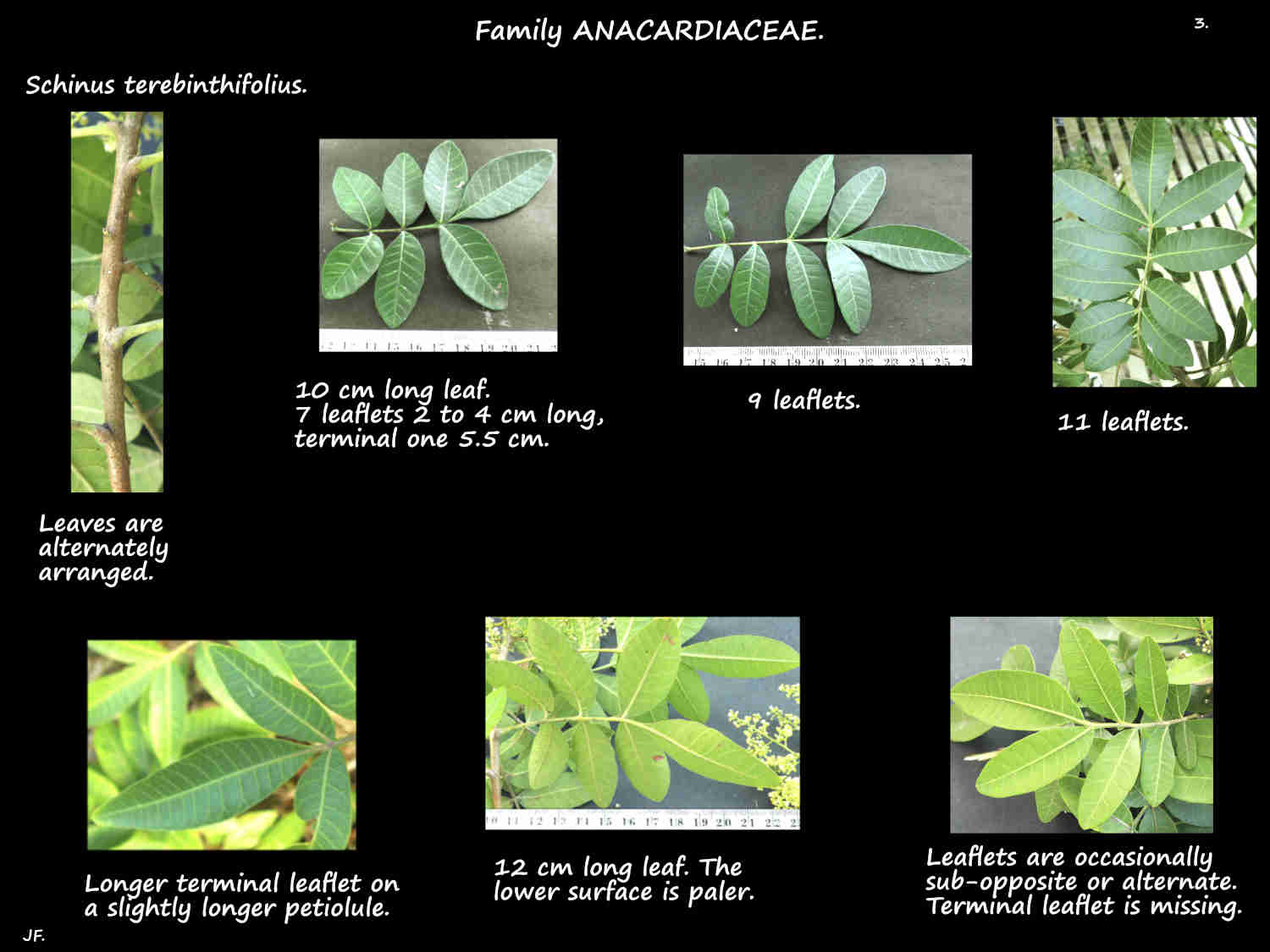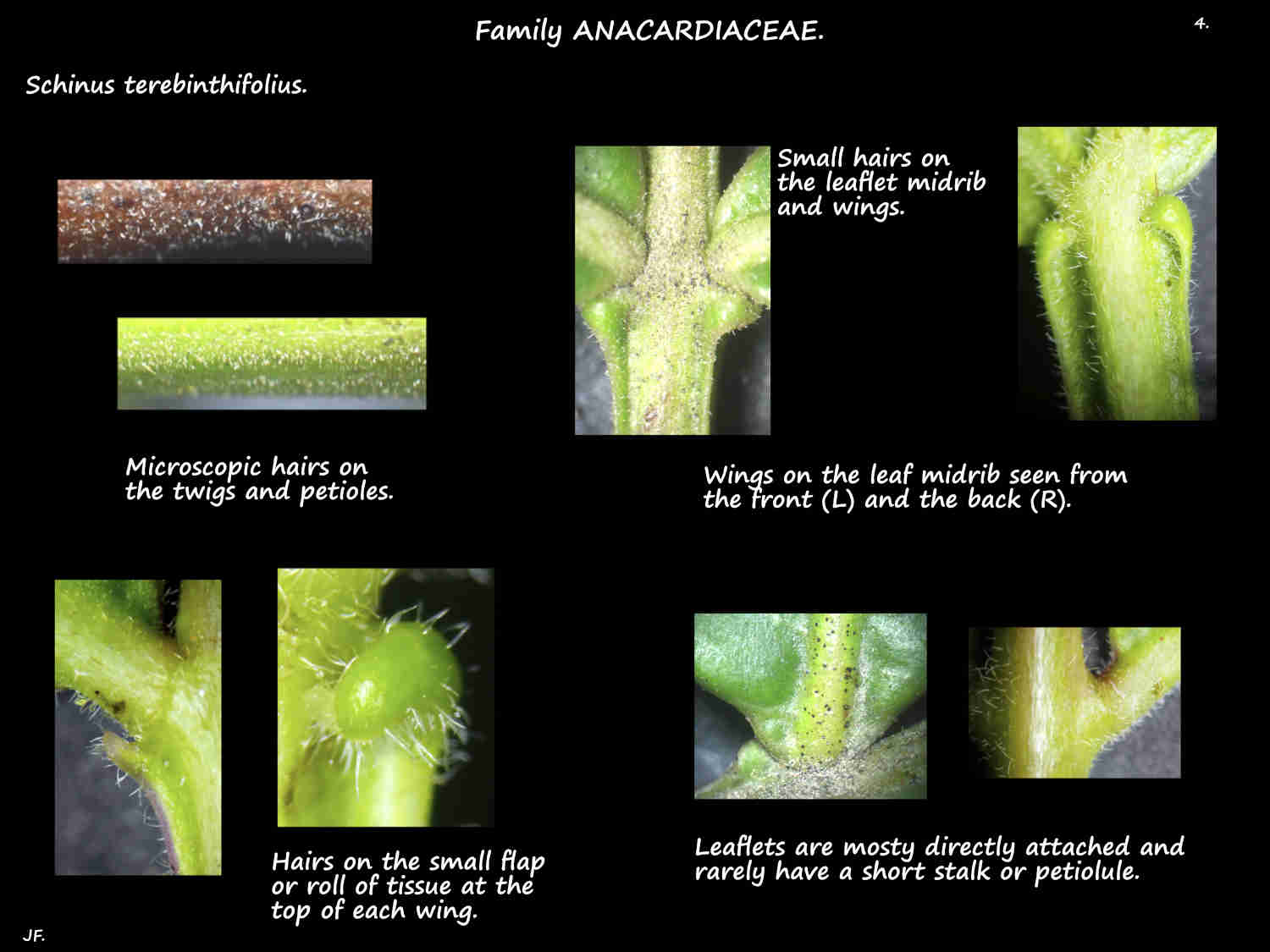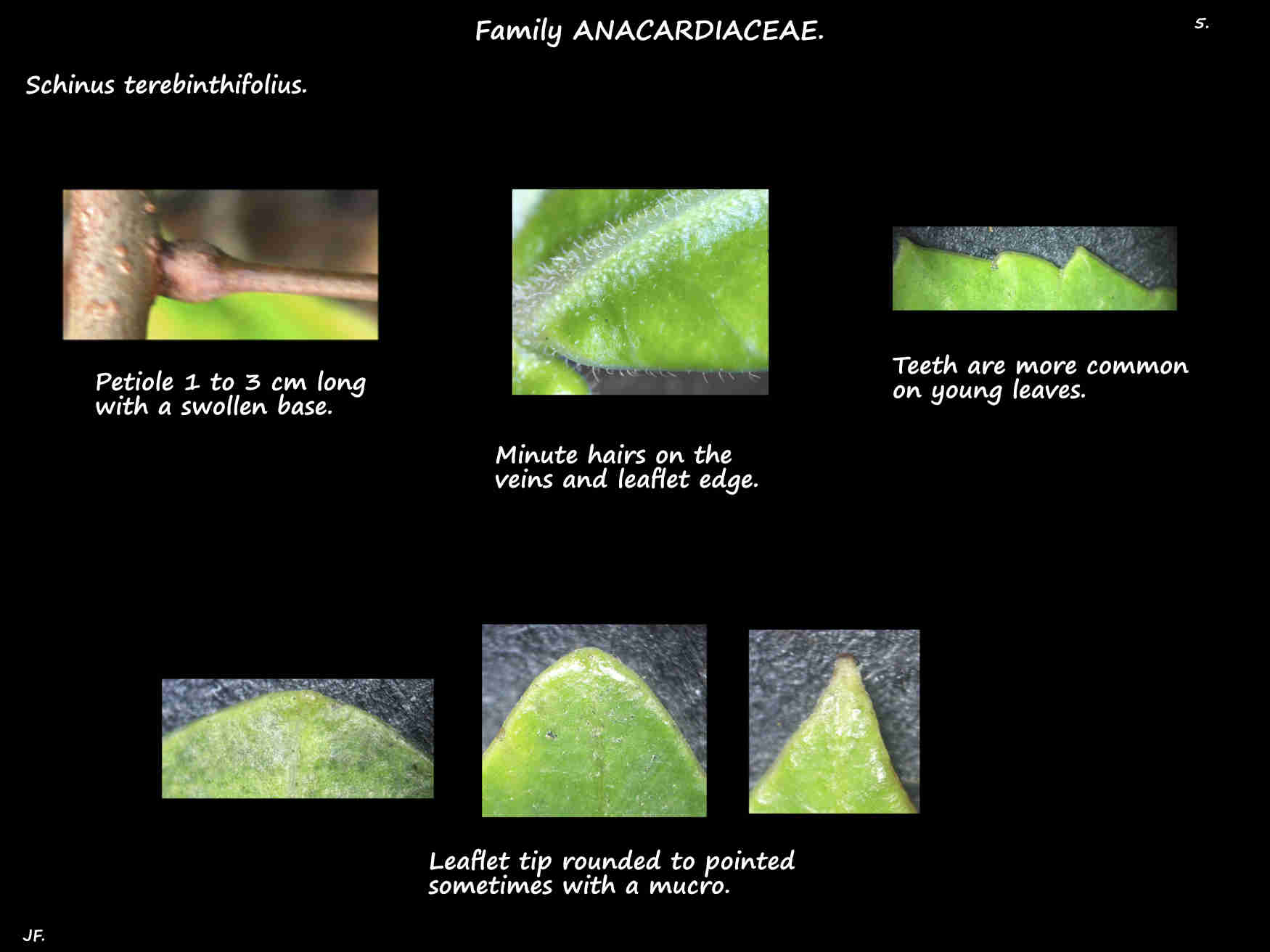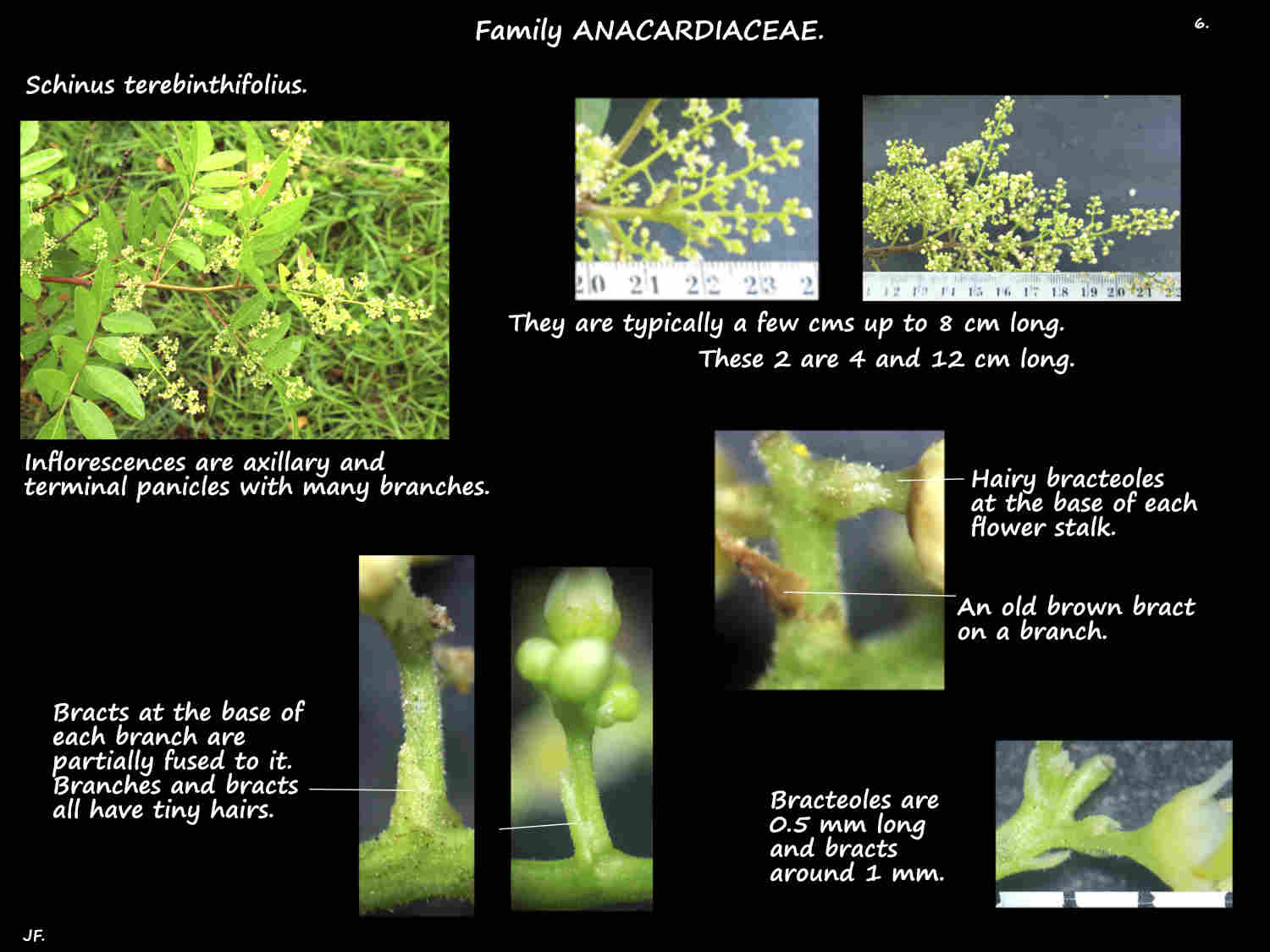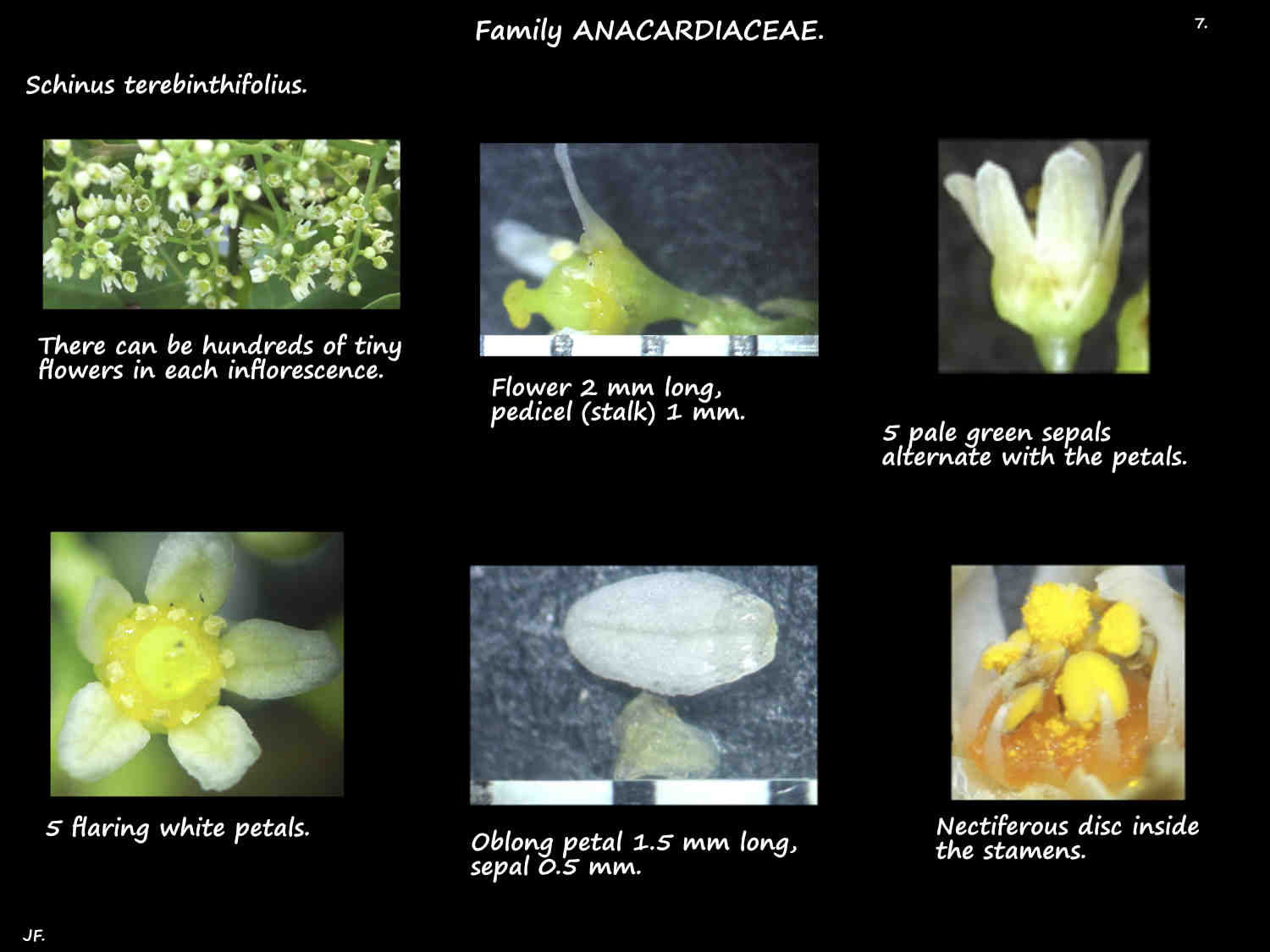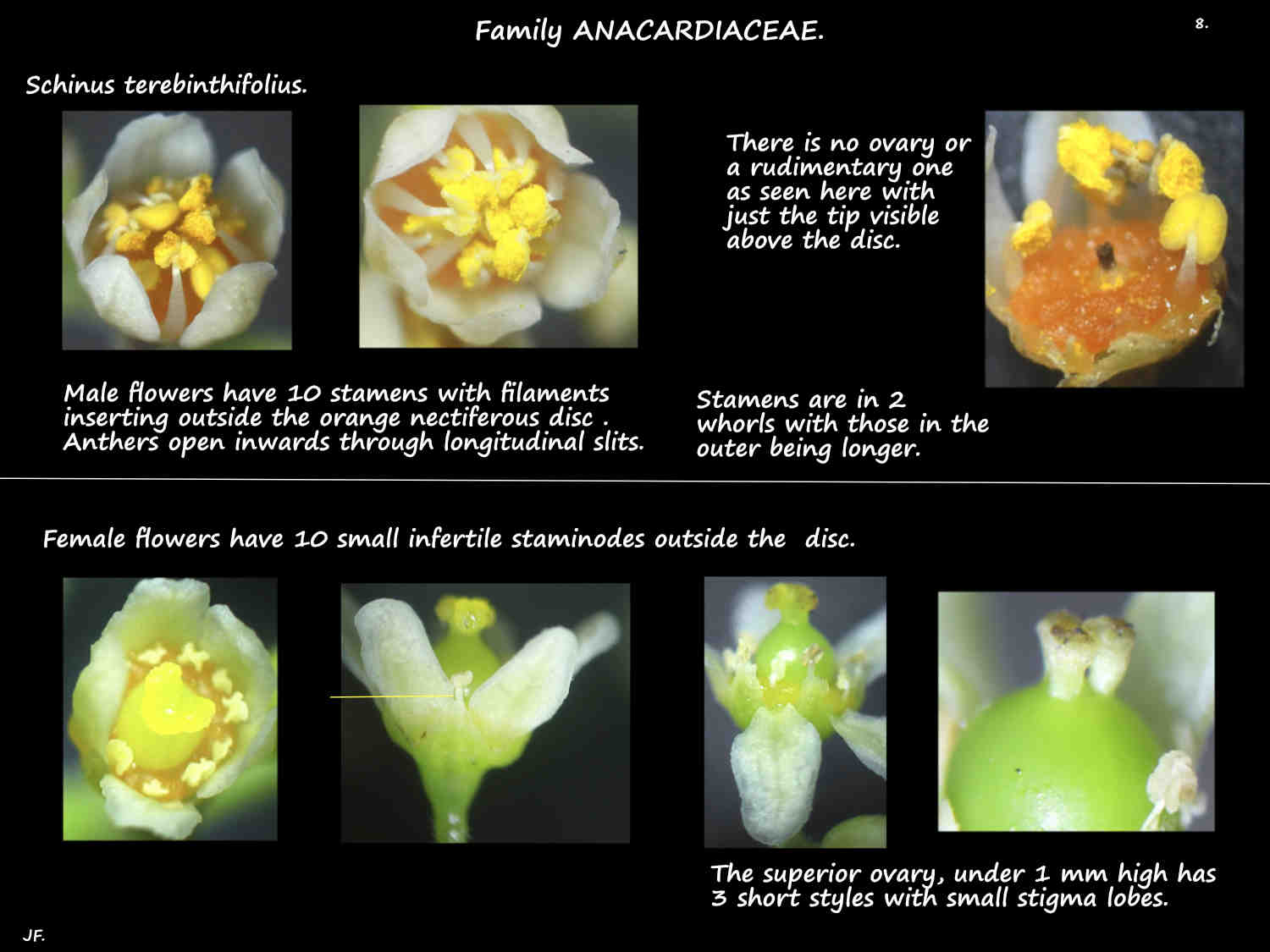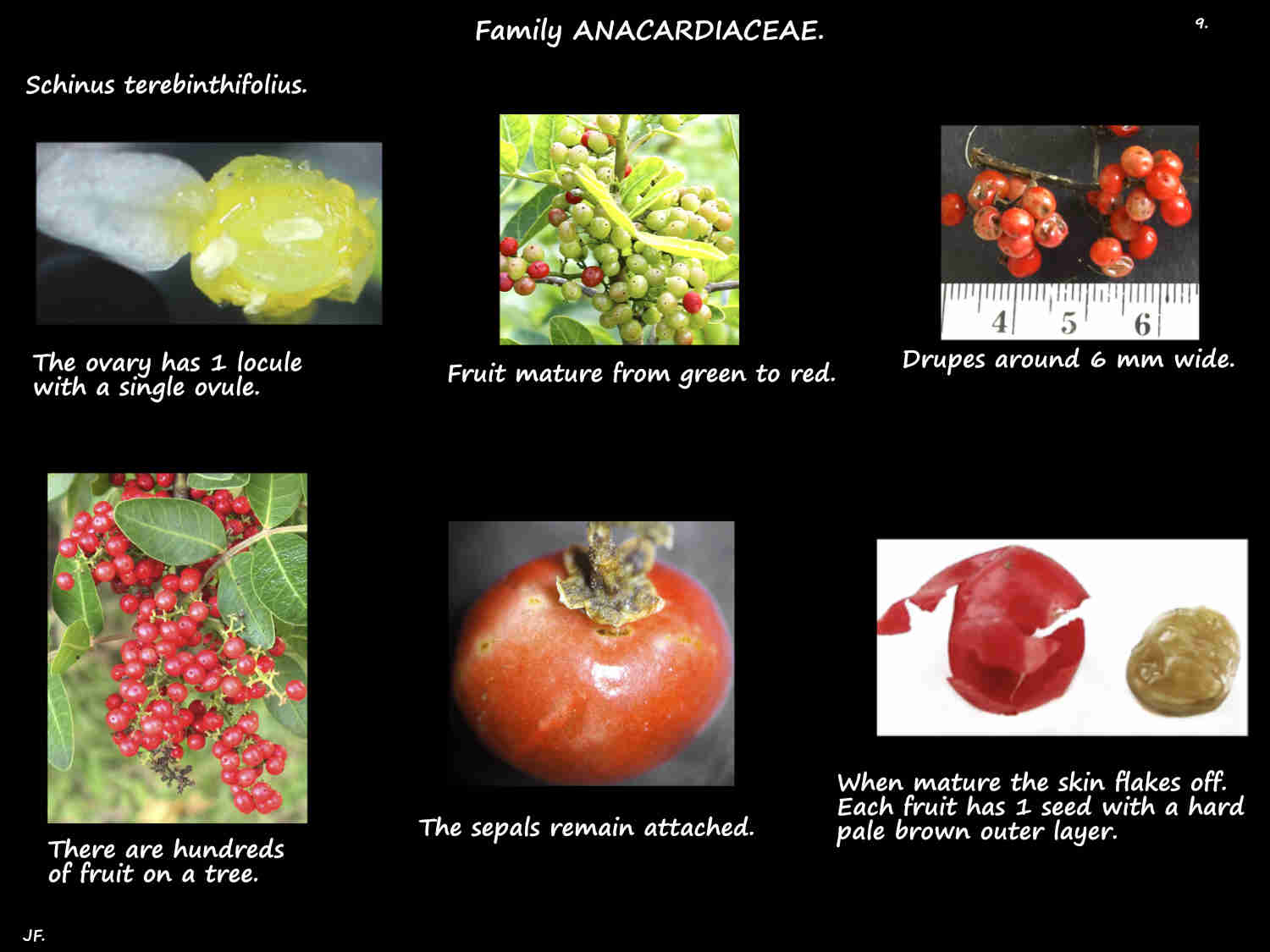Schinus terebinthifolius.
The Broadleaved or Brazilian pepper tree, naturalised in S. E. Queensland is also seen as Schinus terebinthifolia.
Used as an ornamental tree is has become an invasive weed in some countries.
The evergreen plants can be shrubs 3 m high or 10 (15) m high trees.
They are bushy plants with arching and spreading stems.
There is often more than 1 trunk and the dark brown to black bark has deep fissures.
Young light brown branches have pale raised nodules (lenticels).
Twigs have smooth bark with very short pale hairs.
Dense thickets can form with suckers growing from the roots or damaged stems.
The alternately arranged pinnate leaves are on petioles up to 3 cm long with a swollen base.
They are up to around 16 cm long with 4 (2 to 7) opposite pairs of leaflets and a single terminal one.
Lateral leaflets, on no stalk (petiolule) or one up to 3 mm are usually around 2 to 6 cm long and up to 2 cm wide.
The terminal leaflet is slightly larger and has a petiolule up to 18 mm long.
The leaf midrib has small wings down the sides most marked just under the leaflet bases.
There are microscopic pale hairs on the petiole and leaf midrib or rachis.
The leaves do not droop which distinguishes them from Schinus molle also found in Queensland.
The elliptic to ovate leaflets are dark green above and paler underneath.
The blunt to pointed tip may have a tiny abrupt point or mucro.
Young leaves have a toothed edge but older leaves have none or occasionally a few teeth near the tip.
Young leaves have microscopic hairs mainly on the veins on both surfaces.
Inflorescences are terminal and in the near terminal leaf axils.
They are much branched panicles up to around 8 (12) cm long with many tiny flowers.
There are triangular to lanceolate bracts.
The flowers are mostly unisexual with males and females on different plants.
Flowers, on a stalk or pedicel 1 to 2 mm long are 2 to 3 mm long and wide.
There are microscopic pale hairs on the branches and pedicels.
Bracts have similar hairs on the outer surface and longer simple ones on the edge.
All flowers have 5 sepals and petals that alternate with each other.
The widely ovate, pale green sepals are 0.5 to 1 mm long and fused at the base.
There may be hairs on the outer surface and edge similar to the bracts.
The free spreading oblong white petals are 2 mm long.
There is a bright yellow to orange nectiferous disc inside the stamens.
Male flowers have 10 stamens and no, or a vestigial ovary.
The stamens are in 2 whorls with those in the inner whorl being shorter.
The ovate anthers open inwards through longitudinal slits.
Female flowers have 10 staminodes (infertile stamens) and a spherical ovary.
The ovary has a single locule and 3 short styles with small stigma lobes.
The spherical fruit are drupes with the sepals still attached.
They are 4 to 6 mm across and mature from green to bright red.
When mature the skin flakes off.
Each drupe has a fleshy layer around a hard coated seed.
J.F.

